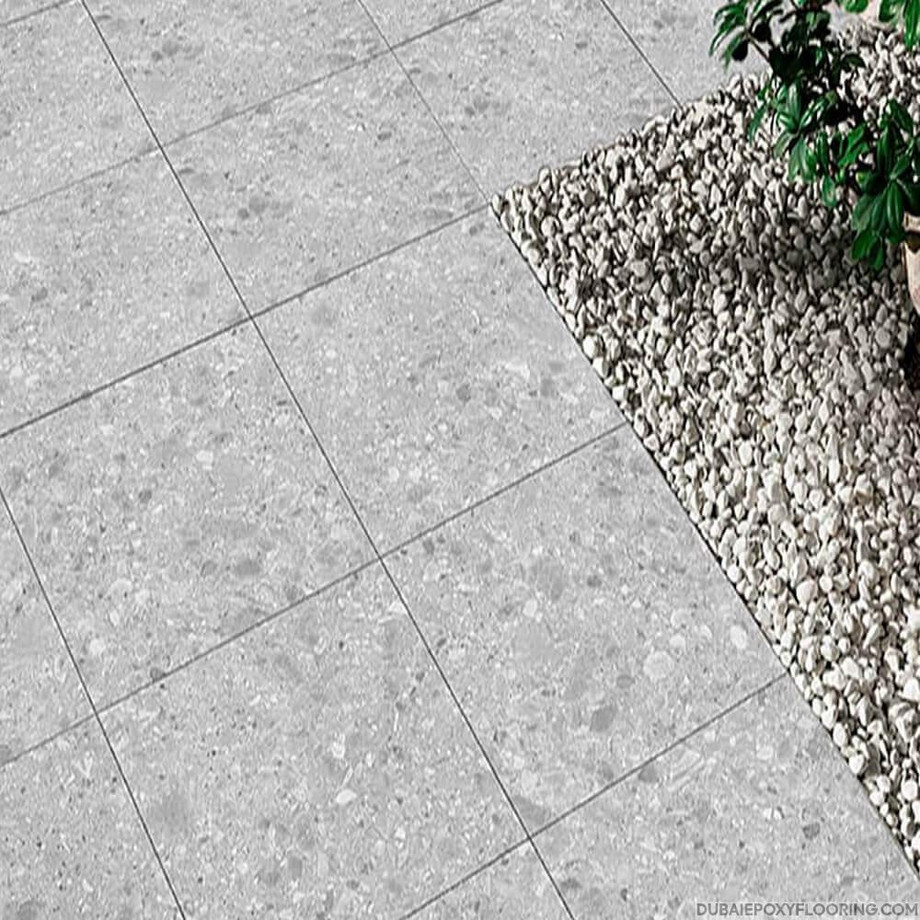Terrazzo tiles have been gracing floors and walls for centuries, and their enduring popularity is a testament to their timeless charm and versatility. Originating in Italy during the 15th century, terrazzo is a composite material that typically consists of chips of marble, quartz, granite, glass, or other suitable materials, set in a cementitious or epoxy binder. Today, terrazzo tiles are experiencing a resurgence in popularity, not only for their aesthetic appeal but also for their sustainable and durable characteristics.
A Rich History:
Terrazzo has a rich and storied history that dates back to the Venetian artisans of the 15th century. Originally a way to reuse and repurpose excess marble remnants, terrazzo quickly became a symbol of luxury and sophistication. The technique involves embedding chips of various materials into a cement or epoxy base, which is then polished to reveal a smooth and stunning surface. Over the centuries, terrazzo has evolved, adapting to different design trends and architectural styles while maintaining its inherent beauty.
Timeless Aesthetic Appeal:
One of the key reasons for the enduring popularity of terrazzo tiles is their aesthetic versatility. The combination of different materials in the chips allows for an endless array of color and pattern possibilities. Whether you prefer a classic, monochromatic look or a vibrant, contemporary design, terrazzo can be customized to suit your taste and style. The seamless blend of colors and textures in terrazzo tiles adds a touch of elegance to any space, making them a favorite among architects and interior designers.
Sustainability in Design:
In an era where sustainability is a top priority, terrazzo tiles stand out as an eco-friendly choice. The use of recycled materials in terrazzo production aligns with the principles of reduce, reuse, and recycle. By incorporating recycled glass or stone aggregates, terrazzo helps reduce the environmental impact of construction and interior design projects. Additionally, the longevity and durability of terrazzo contribute to its sustainability, as it can withstand heavy foot traffic and the test of time, reducing the need for frequent replacements.
Versatility in Application:
Terrazzo tiles are incredibly versatile and can be used in various applications, from flooring to countertops and wall cladding. The adaptability of terrazzo makes it suitable for both residential and commercial spaces. Whether you want to create a chic, modern kitchen or a luxurious hotel lobby, terrazzo tiles offer a solution that seamlessly blends style with functionality. The ease of maintenance and resistance to stains make terrazzo a practical choice for spaces that demand both aesthetic appeal and durability.
Modern Interpretations:
While terrazzo tiles have deep roots in history, contemporary designers are putting a modern spin on this classic material. Innovative color combinations, larger chip sizes, and creative patterns are giving terrazzo a fresh and current look. This modern reinterpretation ensures that terrazzo remains relevant in today's design landscape, appealing to a new generation of homeowners and designers.
In conclusion, terrazzo tiles continue to captivate us with their timeless elegance, sustainable features, and adaptability to diverse design preferences. Whether you're drawn to the historical charm of traditional terrazzo or excited by its contemporary variations, these tiles are a testament to the enduring allure of a material that has stood the test of time. As we navigate the ever-evolving landscape of interior design, terrazzo remains a steadfast choice for those who appreciate a perfect blend of style, sustainability, and durability in their living spaces.

